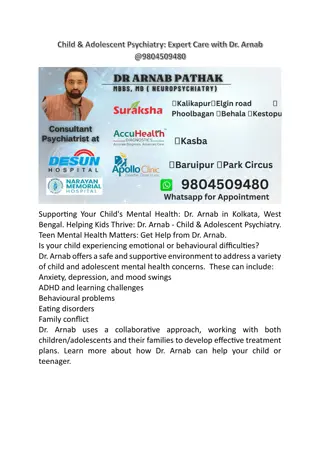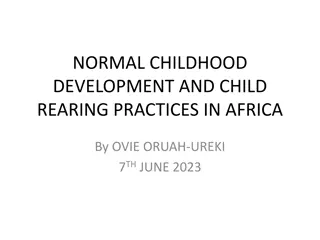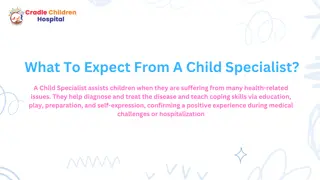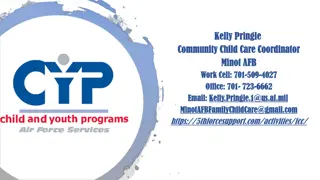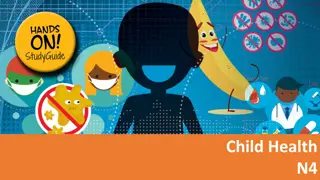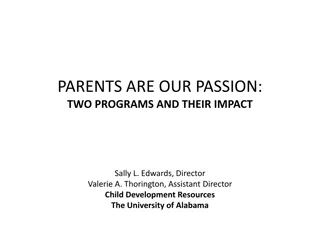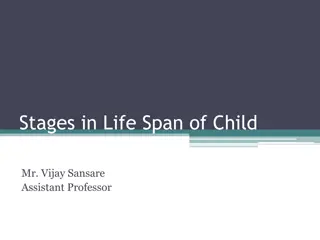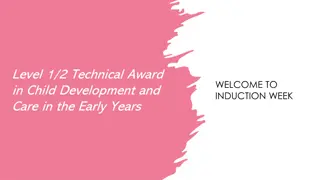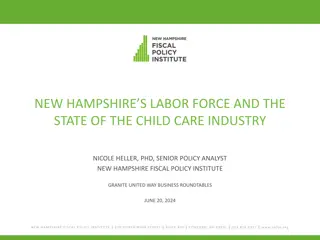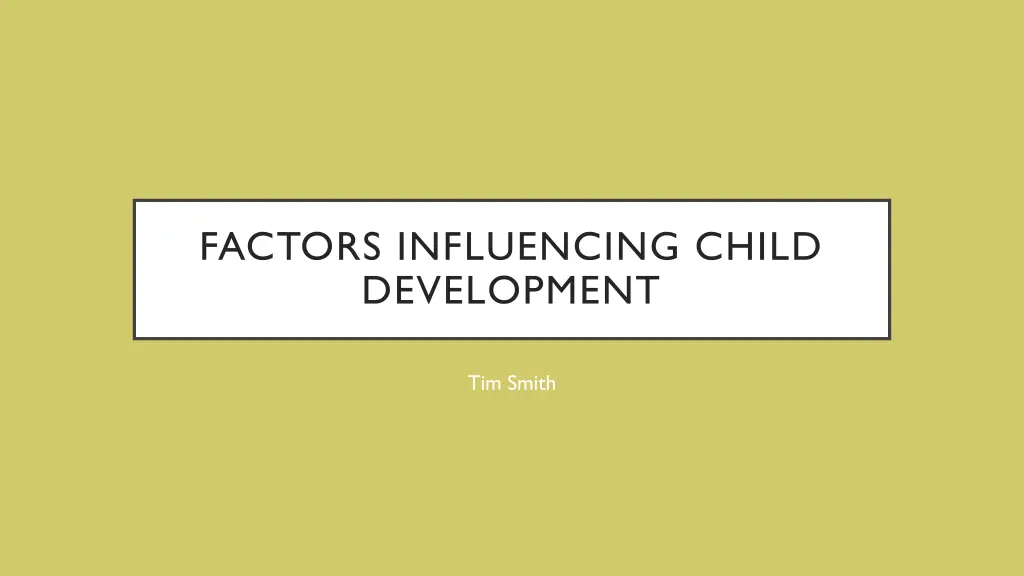
Factors Influencing Child Development and Growth
Understanding the factors that influence child development is crucial for creating supportive environments. Socioeconomic status, family relationships, and the quality of childcare providers all play a significant role in shaping a child's growth and well-being. By considering these factors, we can ensure that children receive the nurturing and opportunities they need to thrive.
Download Presentation

Please find below an Image/Link to download the presentation.
The content on the website is provided AS IS for your information and personal use only. It may not be sold, licensed, or shared on other websites without obtaining consent from the author. If you encounter any issues during the download, it is possible that the publisher has removed the file from their server.
You are allowed to download the files provided on this website for personal or commercial use, subject to the condition that they are used lawfully. All files are the property of their respective owners.
The content on the website is provided AS IS for your information and personal use only. It may not be sold, licensed, or shared on other websites without obtaining consent from the author.
E N D
Presentation Transcript
FACTORS INFLUENCING CHILD DEVELOPMENT Tim Smith
SOCIOECONOMICS Socioeconomics largely cover the bases of a family s race, culture, and ethnicity as well as their economic circumstances. A child s surroundings can affect how well they learn, especially their family and community culture. Children of families residing in high-risk areas (low SES) were more prone to discrimination than those of low-risk areas, which may interfere with their education. Communities may feel the need to prepare children for discrimination, which was found to produce a lower level of children s internal locus of control.
SOCIOECONOMICS As children feel like they can control less of life s circumstances, they may succumb to a self-fulfilling prophecy of stagnancy. Parents in these communities may not have the resources to find adequate childcare for their children, which may lead to one parent staying at home, causing a lower income for the family. Family structure itself can affect a child s development. A parent may struggle with drug addiction, meaning an alternative adult may take care of the child. Similarly, a family s immigration status can affect development as a newly- immigrated family may struggle to get on their feet, leading to less attention on the children s needs.
FAMILYS RELATIONSHIP WITH CHILDCARE PROVIDER A family s interactions with childcare providers are important. The provider often spends a hefty fraction of each day with the family s child. It is important that the relationship support positive, goal-oriented relationships. Through healthy relationships, the child can be well-equipped to handle further education as well as life skills. These goal-oriented not only support the child, but also ensure that the family is reaching goals that indirectly affect the child such as financial security. Important aspects of these relationships include learning, discipline, communication, and knowing roles.
QUALITY OF CHILDCARE PROVIDER In addition to the relationships within it, the quality of the childcare provider itself is very important to child development. Children will spend a lot of time with their childcare provider. Within this, children are also going to be subjected to many learning opportunities. The childcare provider must ensure that the child is gaining from the time spent in childcare. This means serving as the catalyst to the child s learning whether it be educational or social learning. The childcare provider must be able to supply children with multiple aspects of learning to provide the best care they can.
QUALITY OF CHILDCARE PROVIDER Childcare providers must ensure that the classroom environment is conducive to learning. This means having options such as a drawing station, a building station, a physical play area, etc. In addition to this, the classroom s curriculum should encourage the children to self-direct their learning. Basic structure is required, but the adult should not being directing every aspect of the classroom. The childcare providers should also be qualified to perform childcare, which typically means that the directors/leads have a degree relevant to child development.
REFERENCES Quintana, S. M., Aboud, F. E., Chao, R. K., Contreras, G. J., Cross, W. E., Hudley, C., Vietze, D. L. (2006). Race, Ethnicity, and Culture in Child Development: Contemporary Research and Future Directions. Child Development, 77(5), 1129 1141. Getting Started: Family Engagement and Positive Goal-Oriented Relationships. (n.d.). Retrieved from https://eclkc.ohs.acf.hhs.gov/family-engagement/developing- relationships-families/getting-started-family-engagement-positive-goal.



